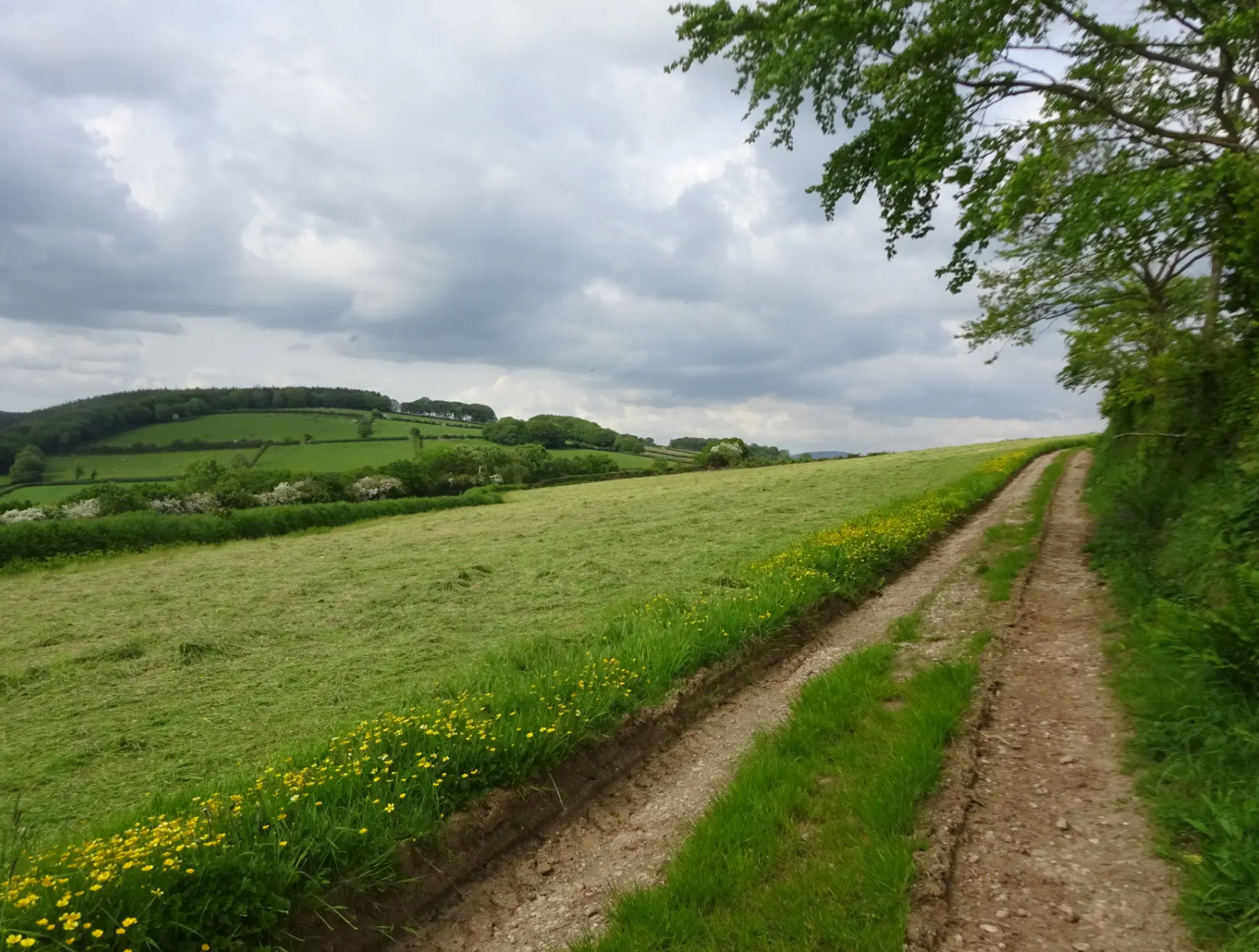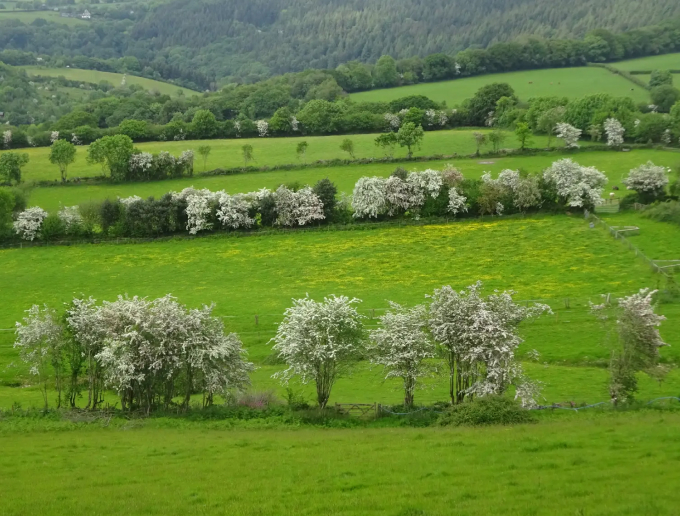Bear very slightly right, then drop to cross a stile into a field: marvel at the view, taking in (from left) Kit Hill, Gunnislake, Morwell Wood (above Morwellham) and then Maddacleave Wood.
The onward route through fields at Slymeford is well signed. Bear half-right, downhill, to pass a footpath post; the Calstock Viaduct towers over the river away to the left. Continue in the same direction and through a small gate; drop to cross a stream, then bear very slightly left to pass immediately below gardens. On the next corner pass through a gate and bear right; go through a gate by a big barn, then turn left through another gate. Keep ahead, and through another gate into a field.
Follow the left edge; cross a stile, then follow the right edge of the next field; the chimneys of Okel Tor Mine can be seen on the other side of the river, as can the intertidal marsh just upriver from Calstock. Chimneys on the east bank of the Tamar mark the sites of Gawton Mine and Rumleigh Brickworks.
At field end pass through a gate and turn right on a track, heading towards Gawton Farm. Pass through the farmyard, via gates, to reach a lane.







